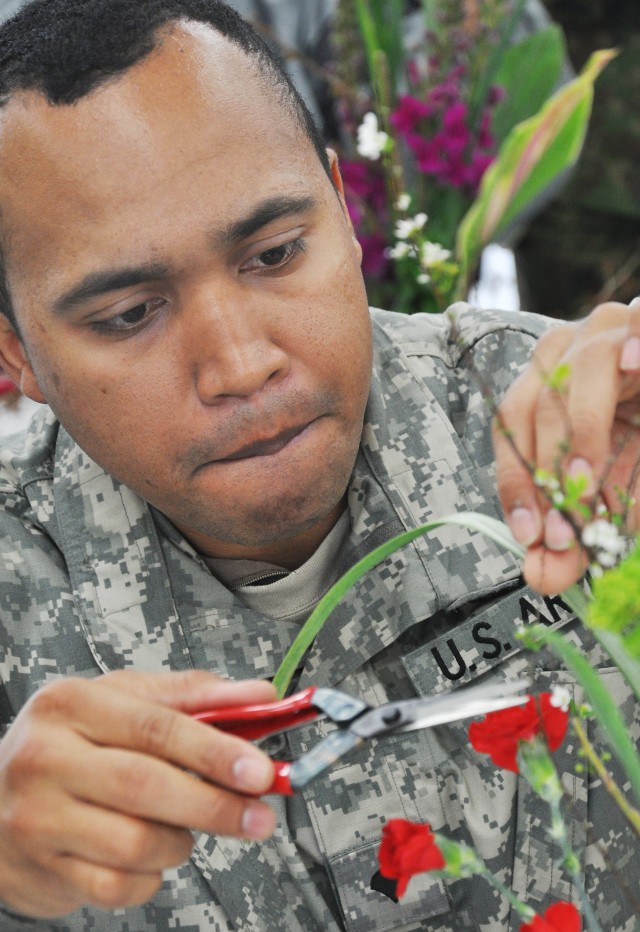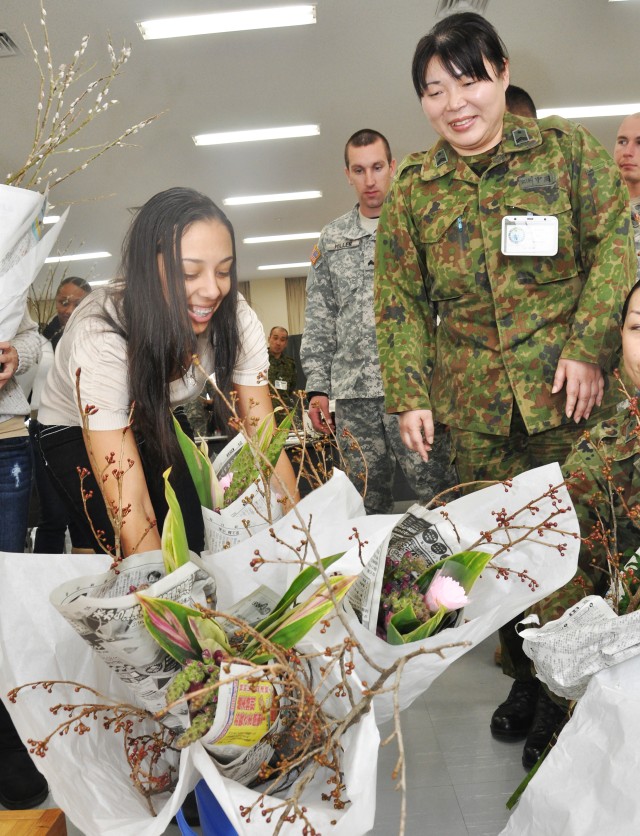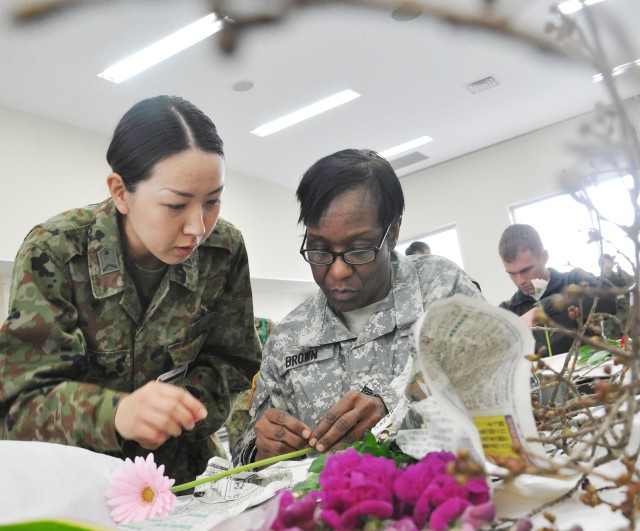CAMP KENGUN, Japan - Exercise Yama Sakura 59 focuses on mil-to-mil training, interoperability and enhancing combat readiness. Understanding one and other's culture is critical to this goal because it strengthens relationships between U.S. and Japan Ground Self Defense Forces soldiers.
Flower arrangement, referred to as "ikebana" by the Japanese, is one of the customs Japanese citizens use as a form of relaxation, balance, and focus. The tradition dates back 500 years with the introduction of Buddhism to Japan.
Participants in Yama Sakura 59 had a number of opportunities to learn about Japanese culture, including ikebana during classes taught by the Japan Ground Self Defense Force Western Army.
"I decided to attend this class to learn how to make arrangements for my wife and also learn about the Japanese culture," said Capt. Michael R. Prather, of the 4th Stryker Brigade Combat Team, 2nd Infantry Division, Joint Base Lewis-McChord, Wash. "I am also told that it is a form of focus and relaxation."
"I am very happy to see the U.S. military personnel coming to learn about our culture," said Master Sgt. Yuuichi Kudou, Western Army. "It is a good opportunity for them to learn balance and coordination."
Pfc. Cynthia Rodarte, 40th Infantry Division, California National Guard, expressed her passion for floral decoration and saw the Japanese flower arrangement class as a perfect addition to her knowledge base not only of flowers but of life skills.
"I am excited to have this cultural experience, which will improve my ability to relax and focus while doing other tasks," said Rodarte.
In Japanese culture, monks would decorate the altars of temples with flowers as part of their religious practice.
"In the 16th century flower arrangement was conducted to decorate the statue of Buddha to make the statue look nice," said Mitsuyo Okamoto, class instructor. "Flower arrangement is a good thing for the spirit."
She added that while the U.S. Soldiers' attempts at flower arrangements were not quite traditional to Japanese culture, she would advise them to keep their originality.
Yama Sakura is an annual, bilateral exercise with Japanese forces and the U. S. military that is U.S. Army Pacific's premier exercise. This year's exercise is a simulation-driven, joint-bilateral, command post exercise and is the 29th iteration of the Japan-based exercise series.
The exercise is designed to enhance U.S. and Japan combat readiness and interoperability while strengthening bilateral relationships and demonstrating U.S. resolve to support the security interests of friends and allies in the region. U.S. and Japanese forces exchange ideas, techniques, and military experiences during Yama Sakura.
Roughly 1,500 U.S. personnel and 4,500 Western Army Soldiers are participating in the exercise at Camp Kengun. U.S. units include USARPAC, I Corps Forward, and U.S. Army Japan








Social Sharing